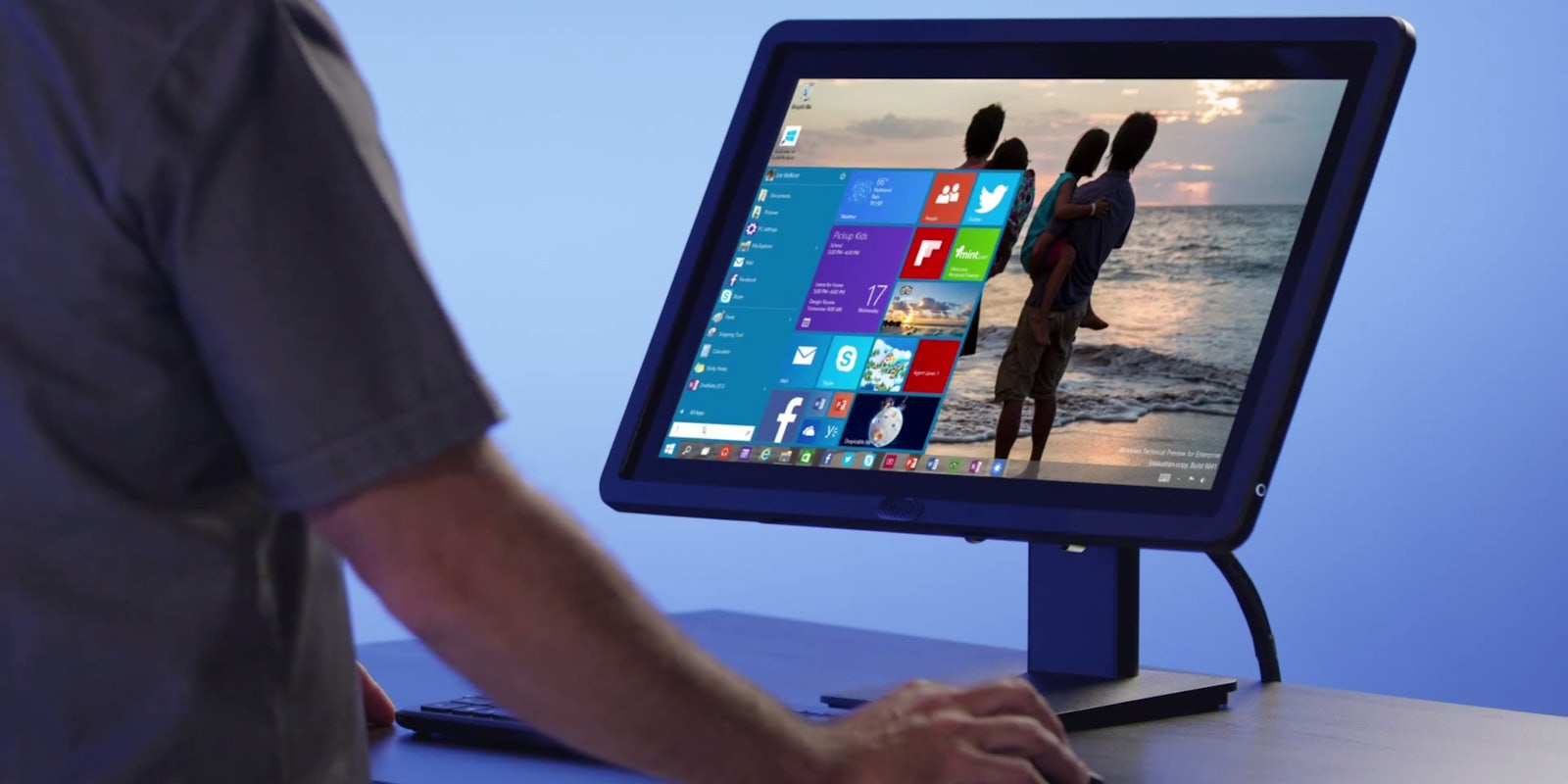Microsoft has finally unveiled the latest version of Windows, and it will please many people who didn’t enjoy the drastic changes in Windows 8. Windows 10—yes, it’s skipping Windows 9 for reasons unknown to mankind—is here, with some features that will make longtime PC users happy.
Here are the five most important things you need to know about Windows 10 right now.
1) The classic desktop is back in action
The taskbar and Start Menu are back in full force. Microsoft recognized its mistakes with the dramatic changes it implemented in Windows 8, and has rolled some of them back into what appears to be a cohesive blend between new and classic features.
The new Start Menu features Live Tiles, in a layout that appears to be a drastic improvement over the classic Start Menu. The improved taskbar also gains a new feature called task view, which will show you all open apps and files on your computer in a simple layout.
“We have a massive amount of users who know Windows 7 well, and Windows 8 users who know touch well. We need something that works for both,” said Microsoft Vice President Joe Belfiore during the announcement of Windows 10. “We’re looking to find the balance, so that all the Windows 7 users get a familiar experience on the devices they already have.” Belfiore said.
Through a bit of trial and error, Microsoft learned that the learning curve of Windows 8 was too steep for many users who didn’t want to learn what amounted to an entirely new operating system. Bringing back the taskbar and Start Menu, where all of your apps can be found, is a huge step toward remedying that issue.
2) Touch isn’t dead
If you enjoyed the touch features Microsoft based Windows 8 around, you aren’t totally out of luck. Microsoft has kept around many touch features, including the Live Tile start screen for touch devices (now including the taskbar, but not for phones), thanks to a new feature Microsoft is calling Continuum. If you have a keyboard connected, Windows 10 will default to the classic desktop mode, but for touch devices without a keyboard, you will get the Live Tile layout.
The charm bar also gets to stick around in Windows 10, which you can access by swiping from the right side of the screen. You can also swipe left to access the task menu, which will show you all open apps and files on your device.
3) One operating system, one app store
Microsoft is going full steam ahead with its one-operating-system-for-all-Windows-devices plan. From the phone to the tablet to an all-in-one PC, everything will run on Windows 10. With one operating system comes one app store to suit all of your needs. Phone, tablet, and desktop apps will all be available in the same Windows Store.
App purchases in the Windows Store are also viewable in a window, instead of only in full-screen mode. Universal apps are coming as well, with Microsoft promising to talk more about them at its BUILD conference in April.
4) Power user features
Much like Apple’s desktop operating system, OS X, Windows 10 now gives you the option to have multiple desktops running at one time. A great feature for power users, multiple desktops can separate work files from personal apps and curb the window congestion that can plague Windows users.
Microsoft didn’t neglect power users in Windows 10, even demoing new features for command prompt, including allowing users to use ctrl+V to paste directories directly, instead of using the menu—a long overdue addition.
5) More news to come
Microsoft still has more features to show off in Windows 10. No apps like Internet Explorer were demoed at the event, with Microsoft saying today was about the “core experience”; a demo of consumer features will come later.
The company also wouldn’t say if Windows 10 would be a free upgrade, as Apple does with its OS X operating system.
Windows 10 will be available in 2015, with Windows Chief Terry Myerson saying it will be “mid next year,” before the operating system is ready for public consumption.
Photos via Microsoft




